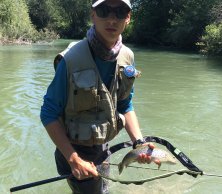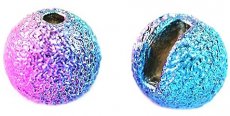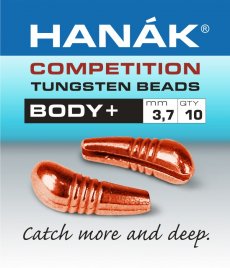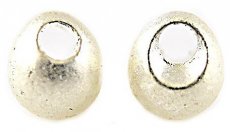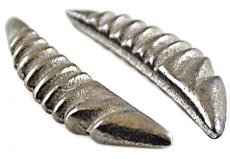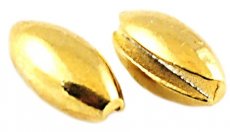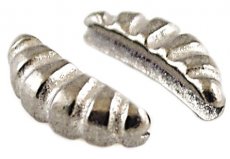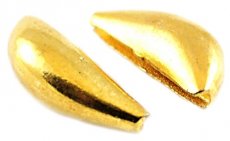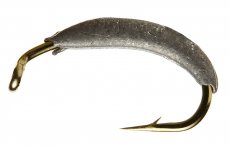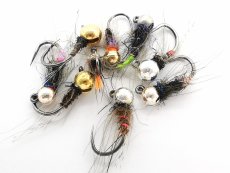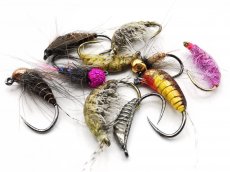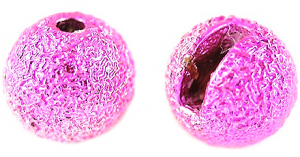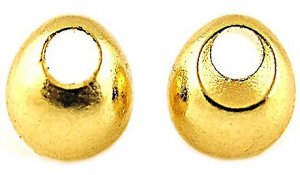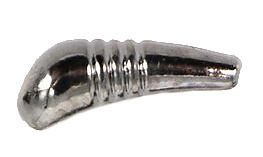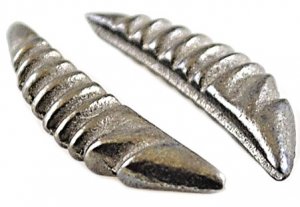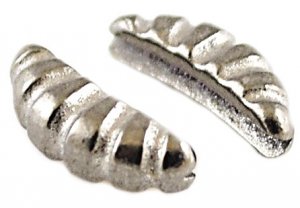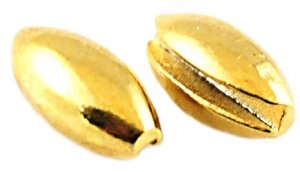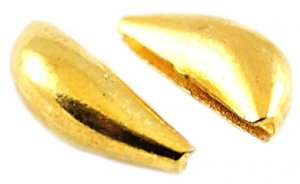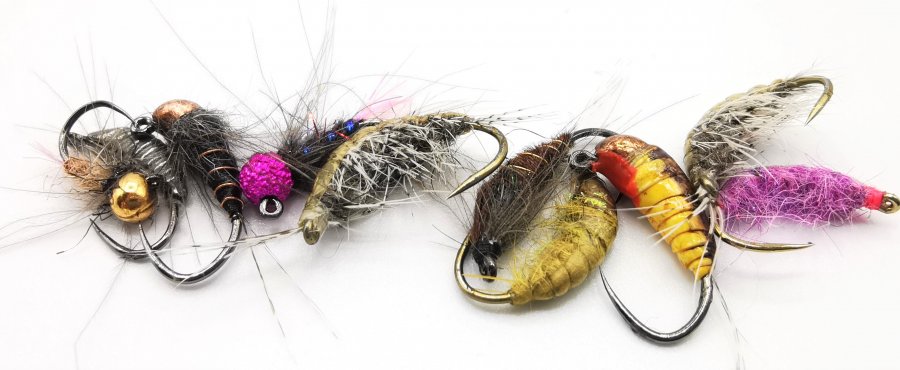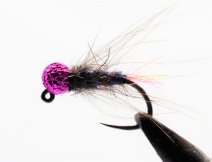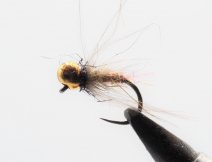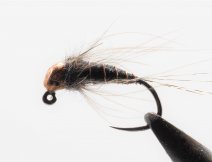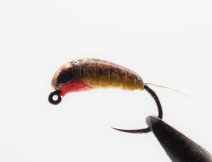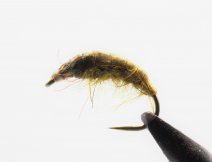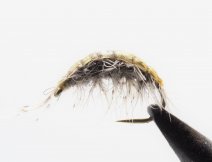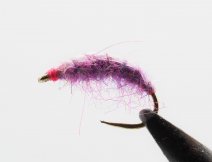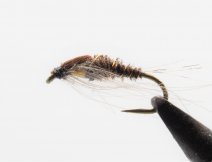Description of basic loads/weights for tying of heavy patterns of modern nymphs.
Most of the weighted nymph patterns today use classic tungsten beads or still popular lead wire (especially for Czech nymph patterns). There are many more ways to load a nymph, and today I will focus on introducing a variety of loads from the heaviest material available - tungsten.
Tungsten Beads Knapek Hooks SUNNY
Sunny tungsten beads have a special surface treatment. Similar to crumpled cellophane film. The main difference from conventional tungsten beads is how light is reflected from these beads. Sunny beads are rather glittering and do not shine like standard tungsten beads. Sunny beads have proved to me especially for fishing in murky water, in which they are ideal in bold colors (orange, purple). However some color variations can certainly be used in clear waters too, where the fish are cautious and classic beads are already too suspicious to the fish.
Tungsten Beads Knapek Hooks JIG OFF
Heads for tying standard nymph patterns, whose shape is not completely round and thus the flies tied with this load change the center of gravity, which is shifted more forward, thereby achieving a change in fly movement. For tying flies with Jig OFF loads are preferred fly hooks with a straight eye, but can also be used for classic jig hooks.
The heads are primarily put onto the hook so that the smooth part of the head is near the hook's eye, for a better jig effect. But definitely try to tie several flies with the head on the contrary, the fly is balanced differently and in the water works interestingly thanks to the groove, which rests the current.
Tungsten Body + Hanak Competition
Tungsten bodies, which are designed for tying classic patterns of jig flies or other special patterns, such as various larvae and recently popular perdigone nymphs. These heavy flies will be appreciated in the strongest currents, where less heavy flies do not get to the fish zone, because the weight of the bodies is 3 times higher than the classic tungsten beads.
While the bodies of the flies are considerably thicker when using this extra load, which does not matter, given that you will use such loaded flies in the fastest currents where the fish does not have much time to see the fly and responds immediately to the flies. I fix the load on the hook with a glue and couple of wraps of the binding thread as well, to prevent the thread from slipping off the load.
Tungsten Shrimps Weights Knapek Hooks NEW SHRIMP BODY
For the tying of classical Czech Nymphs, larvae and gammarus patterns, lead wire has always been indispensable. However lead is not as heavy as tungsten, so it is a problem to get small flies in the faster water to the bottom where we need it. In addition, it is likely that lead will be banned in sport fishing one day due to its toxicity. As a possible substitute come new tungsten shapes, a load designed just to imitate these types of flies.
The New Shrimp Bodies are indented to mimic the articulation of real insects and are flat, in this case best suited to imitate gammarus, which also have a clearly articulated and long tapered body. In tying these flies, it may be more difficult to choose a suitable hook. I came to the conclusion that it is best to use a straight wet hook (Hanak Competition H230 or Dohiku HDN 302). Of course, it is possible to use a gammarus hook, but few have a suitable shape to attach these loads, so it is necessary to have a flexible wire hook that can be slightly bent into the desired shape. Before the start of tying, I recommend to coat the hook and load lightly with a glue.
Tungsten Shrimps Weights Knapek Hooks SCUD BODY
Another type of load, which has a similar use as the previous type. With Scud Body is easy to tie imitations of gammarus or water ladybugs. However, Scud Body Body bodies are wider than Shrimp Body and have a much wider slot for thick wire hooks. Choose shorter gammarus hooks for tying.
For large heavy nymphs with tungsten beads that attach to gammarus hooks, these loads can be applied to the fly body, resulting in a super-heavy pattern due to the dual load.
Tungsten Nymphs Weights Knapek Hooks OLIVE
Olive nymph weights are used for tying flies with drop-like chest, similar to Klíma's micronymph hook, which has poured lead drop. It nicely mimics the head and thorax of mayfly larvae and other nymph species and is noticeably heavier than the old type of lead drops. For tying use the classic wet hooks (again Hanak H230 or Dohiku HDN 302), or wet hooks with an extended shank (e.g. Fulling Mill All Purpose Medium Hook or Hends BL 700), which recently came out of fashion, but thanks to them longer and more conical bodies can be created. Glue the drop to the hook with a glue.
Tungsten Nymphs Weights Knapek Hooks BANANA
The last type of load, which is primarily designed for tying nymphs with drop thorax. When tying, part of the load may be exposed, or you can cover the Banana load with the dubbing. In this way, you will get sufficiently loaded natural flies, without visible loads, which the fish could be afraid of on frequently visited and crystal clear waters. In the smallest size, you can use the load to tie small gammarus and Czech Nymphs on wet hooks size 14.
For tying again I recommend a hook with a longer shank. When tying lightly rub the hook with a glue, then glue the part of the load and start to bind the thread before the glue gets dry.
So much for the topic of special nymph loads. If you still load your nymphs only with tungsten beads, I recommend that you try some of the loads described. For some inspiration I have prepared some of my favorite fly patterns, which you can see in the photo gallery.







